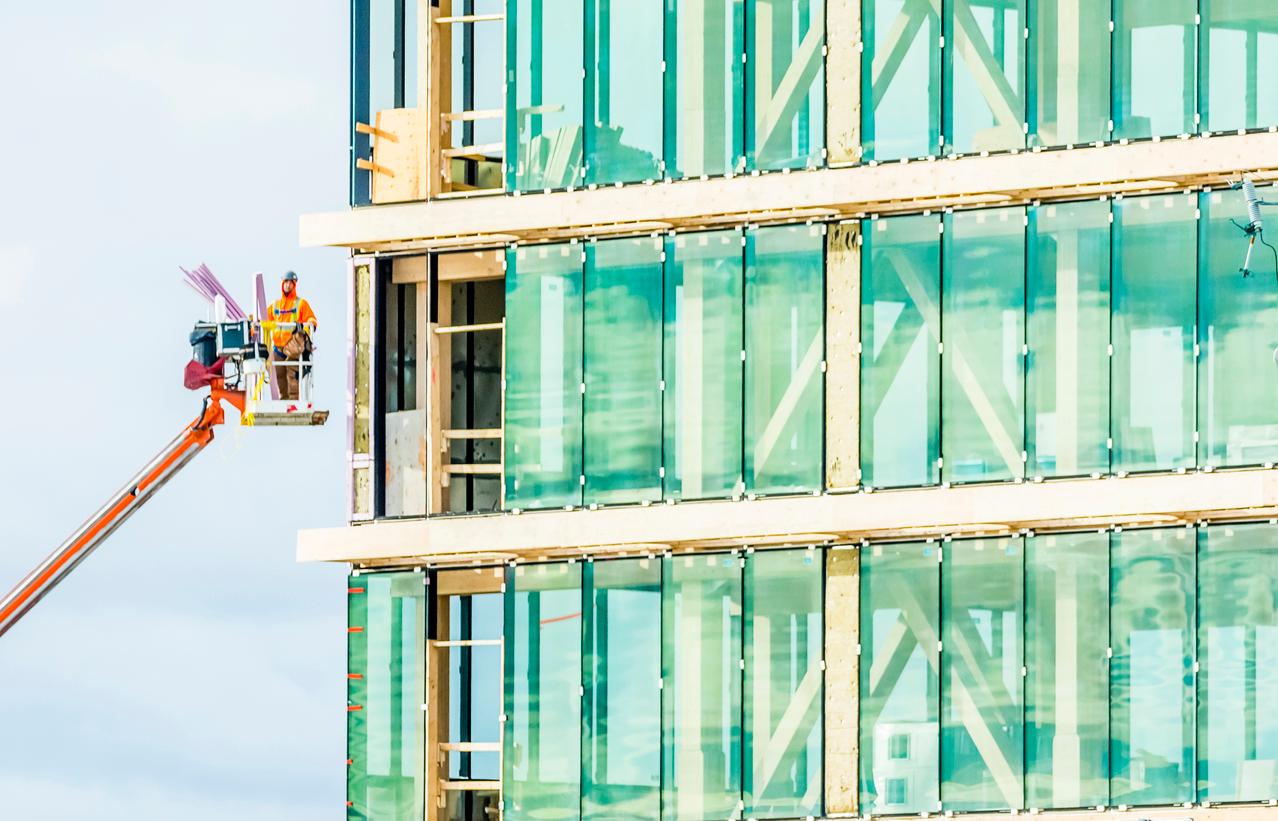The built environment represents a significant share of global greenhouse gas (GHG) emissions,1 with over half of these emissions from residential buildings.2 Buildings are estimated to account for 18% of Canada’s GHG emissions when considering both direct and indirect emissions,3 comprising a significant share.
Construction of buildings according to business-as-usual standards – or in a manner that is not zero-carbon-ready – locks in emissions over decades. Moreover, it can result in significant future costs associated with decarbonization if regulatory policies mandate a zero-carbon shift.
Angela Adduci, Senior Advisor, Policy at the BMO Climate Institute, recently sat down with Kathleen Beaumont, Director, Impact & ESG, Forum Asset Management,* and Paul Morassutti, Chairman, CBRE Limited, to discuss new insights on the cost and asset values of zero-carbon residential construction in Canada.
Listen to this episode of Sustainability Leaders here:
Sustainability Leaders podcast is live on all major channels, including Apple and Spotify
BMO also recently opened its first branch built according to the highest standards in energy efficient construction methods as well as low-carbon design, using materials with high recyclable content, structural wood, and low-carbon concrete.

BMO’s branch bank in Kitchener, Ontario is designed to both Passive House Classic and Canada Green Building Council (CAGBC) Zero Carbon Building Design standards.
Zero-carbon construction is not just important for emissions reduction, but it can also be a smart investment for asset owners.
This view is not yet widely understood. This report analyzes building owners’ uncertainty around the future expected value associated with decarbonized buildings. Survey data from Canada’s National Association of Home Builders indicate that builders and remodelers believe that zero-carbon buildings have benefits related to cost and performance. However, 84% of respondents say consumers’ perceptions of cost are influential on decisions around building to zero-carbon standards.4
The Canadian federal government has introduced a new Housing Plan aimed at addressing an estimated deficit of 5.8 million housing units and aligning it with net-zero objectives. However, the challenging economic environment characterized by high interest rates, regulatory constraints and fees, and lingering inflationary pressures, to name a few factors, poses significant barriers. These conditions may hinder private developers from fully supporting the Plan's goals and achieving the financial returns expected by their investors.
Considering this challenge, BMO Climate Institute, in partnership with Forum Asset Management, conducted an analysis focusing on the costs associated with constructing operationally zero-carbon high-rise multi-unit residential buildings and their expected value relative to base buildings in Canada. This analysis has been reviewed by representatives at the Canada Infrastructure Bank, REALPAC and CBRE.
Key takeaways from the analysis include:
Building to a zero-carbon performance standard on average can be as profitable as conventional building standards, but profitability is currently significantly contingent on government incentives.
Zero-carbon buildings can be a more “future-proof” investment amidst a rapidly changing climate, economic and regulatory environment, and
Zero carbon buildings have the potential for a lower risk profile, benefit from operational and regulatory cost savings, which can result in lower capitalization rates and higher asset values.
Click here to read the complete analysis.
(Aaron Huang, Director, Real Estate Finance, BMO and Kathleen Beaumont, Director, Impact & ESG, Forum Asset Management, also contributed to this article.)
*Since recording the podcast, Kathleen Beaumont has left her role at Forum Asset Management.
1. International Energy Agency. Buildings - Energy System. IEA. Published July 11, 2023.
2. IEA (2023), Global CO2 emissions from the operation of buildings in the Net Zero Scenario, 2010-2030, IEA, Paris, License: CC BY 4.0.
3. Annex: Homes and buildings. www.canada.ca. Published February 12, 2021.
4. “Green Single Family and Multifamily Homes 2020.” National Association of Home Builders, 2020.
